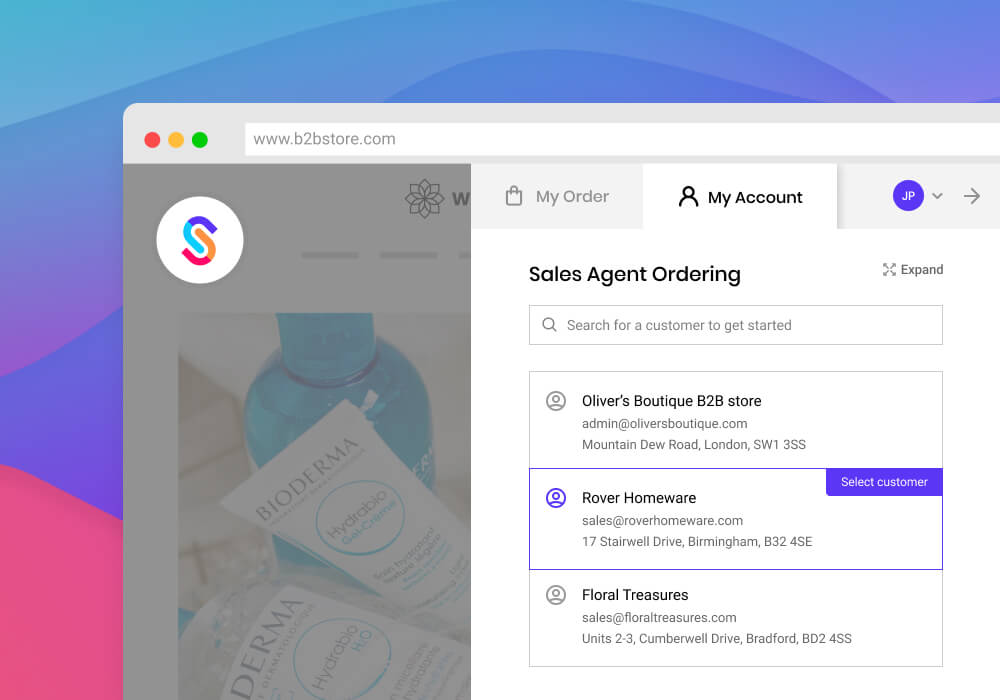Earlier this year, we released a major update for SparkLayer that enabled Sales Agent ordering functionality for merchants. The new tool means that their internal teams and sales agents (e.g. those on the road) can place orders and manage the accounts on behalf of their B2B customers.
This has quickly become an integral element to the workflows of many of our customers, enabling them to rapidly place orders and ensure everything is neatly centralised behind the scenes within Shopify and other backend systems used.
How the Sales Agent tool works
The SparkLayer Sales Agent tool works by allowing merchants to create dedicated logins that enable a special interface on their Shopify store. You can see how this works in our video below.
Once logged in, selected Sales Agents can search for customers assigned to them, add items to an order, place orders, and manage their account (such as re-ordering). Within Shopify, all activity is specifically tagged, allowing merchants to analyse and report on Sales Agent interactions. You can see all the available functionality in our guide here.
How Sales Agents is helping merchants
Beyond enabling the functionality above, there are 3 main areas where we’ve seen Sales Agents help merchants:
1. Introducing self-service to a customer base
A key challenge of B2B eCommerce is finding ways to encourage B2B customers to use and engage with the new systems set up. Often there may be resistance to move from manual ways of working to a digital self-service experience that can be daunting for some customers, such as those used to phoning or emailing through orders or requests for information.
The Sales Agents tool has allowed merchants to softly introduce the notion of online B2B ordering and in many instances, we’ve seen merchants place orders on behalf of customers just to get them used to it. Once an order is placed, the customer then receives order notifications and, if they decide to then login themselves, they’ll see their previous order history, address information, and easy ways to reorder
2. Scaling up sales activities
One of the key goals of the Sales Agent tool is allowing merchants to incorporate their sales team into their B2B operations. As new members of the sales team join, they can easily be granted access and specific accounts assigned to them (e.g. by territory, region, customer size, etc).
As with the end customer, sometimes getting buy-in from a sales team can bring challenges and this may need careful consideration. Providing the sales team can see broader benefits in time-savings and a more efficient process, it may be more straightforward than initially anticipated to get adoption!
3. Unifying operations and processes
The third key area where Sales Agents brings great benefits is around unifying processes and operations. Rather than having disparate channels where orders are placed (e.g. offline, via sales agents, via your website), everything is centralised within the same location. No matter if a customer places a self-service order or if a Sales Agent does so on their behalf, all orders are routed into Shopify the same way - and beyond that, routed to your ERP, WMS, or other backend system you may be using.
The net effect is a far more streamlined B2B ordering process for your business!
Explore more
If you'd like to learn more about how Sales Agent ordering works, please visit our help guide where you'll find more details on how the feature works and how it can be configured to suit your B2B needs.
To learn more about how SparkLayer works with Shopify and Shopify Plus, please feel free to arrange a demo and we'll run you through the SparkLayer features and how it can integrate with all your systems.















